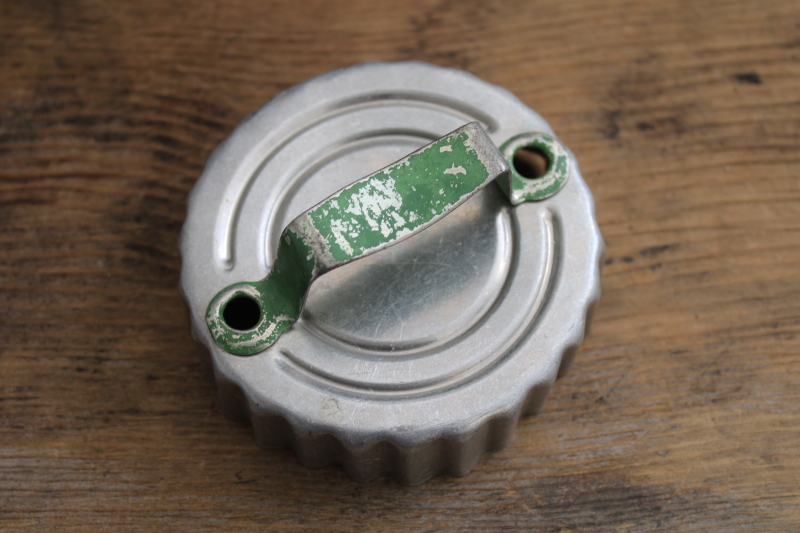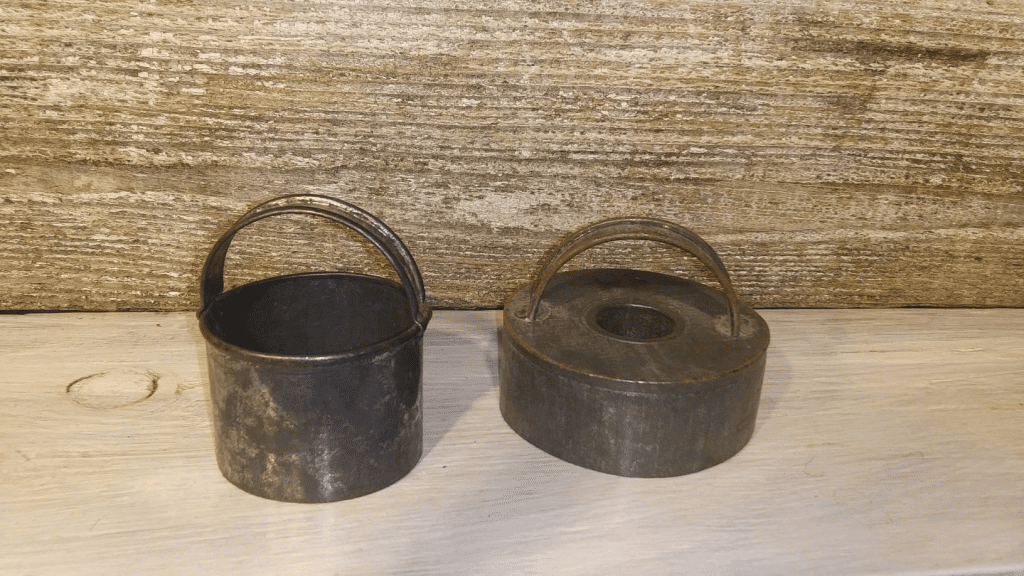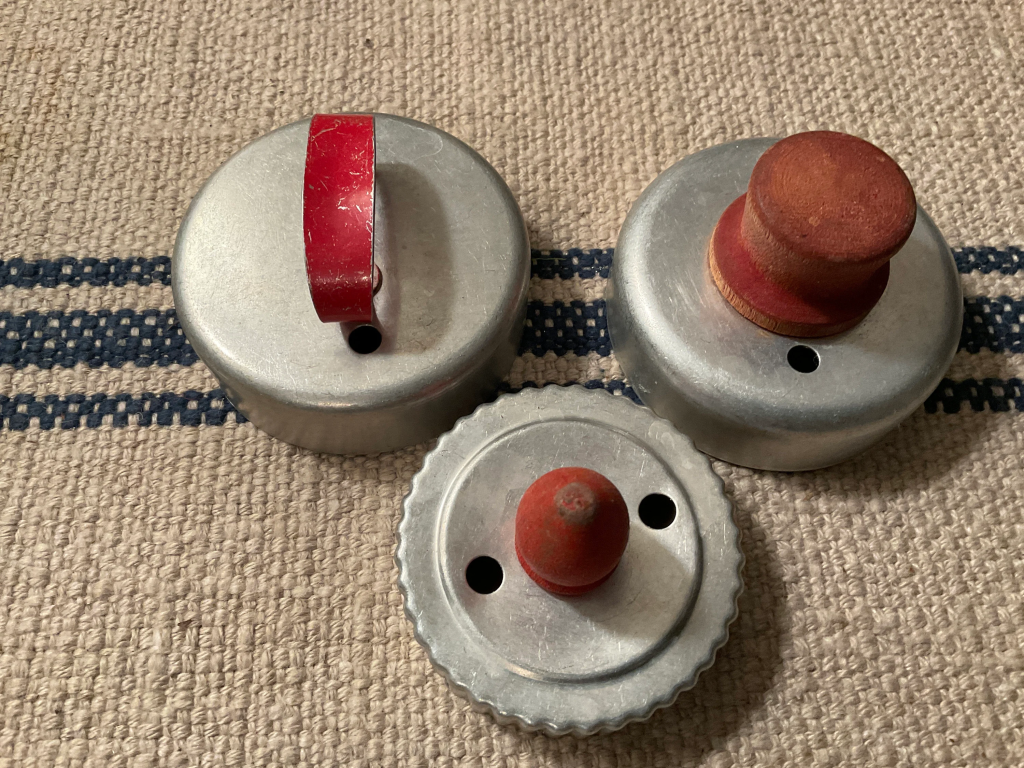Once a staple in every kitchen, the humble biscuit cutter has quietly faded into obscurity. Can you guess what it was used for? This simple yet ingenious tool had a very specific purpose, and its history is more fascinating than you might think! While modern baking trends have introduced new gadgets, the biscuit cutter remains a cherished relic, especially among those who still appreciate the art of homemade biscuits. Let’s take a closer look at its origins, evolution, and why it still holds value today.

The Origins of the Biscuit Cutter: A Tool Born from Tradition
Before mass-produced baking tools flooded the market, people relied on handmade or repurposed items to shape their baked goods. Early biscuit cutters were often nothing more than the rim of a drinking glass or a repurposed tin can. But as baking became more refined, the need for a specialized tool grew.
By the 19th century, dedicated biscuit cutters became widely available. These cutters, typically made of tin, copper, or stainless steel, featured sharp edges for clean cuts and a handle for easy use. They allowed bakers to create uniform biscuits, ensuring even cooking and a professional appearance.
Why Was the Biscuit Cutter So Important?
In an era before frozen or pre-packaged dough, making biscuits from scratch was an essential skill. A well-designed biscuit cutter:
- Ensured Even Baking – Uniform shapes allowed all biscuits to cook at the same rate, preventing some from burning while others remained undercooked.
- Created Light, Fluffy Biscuits – A proper cut, without twisting the dough, helped maintain layers and allowed the biscuits to rise beautifully.
- Made Baking Efficient – Instead of manually shaping dough, bakers could quickly stamp out multiple biscuits in seconds.
It wasn’t just for biscuits either—these cutters were often used for cookies, scones, and even shaping bread dough.

The Evolution of the Biscuit Cutter: From Simple to Decorative
As baking grew into both a necessity and a beloved pastime, biscuit cutters evolved. What started as plain round shapes soon expanded into a variety of sizes and designs:
- Fluted Edges – Some biscuit cutters featured scalloped edges, adding a decorative touch to the final product.
- Adjustable Sizes – Stackable or nesting cutters allowed bakers to choose the perfect size for their biscuits.
- Custom Shapes – While round biscuits were the norm, heart-shaped, star-shaped, and novelty cutters became popular, especially for festive baking.
With the rise of industrial manufacturing, biscuit cutters became more durable, often made from aluminum or stainless steel. Some even came with spring-loaded mechanisms for easy dough release.

The Decline of the Biscuit Cutter: Why Did It Disappear?
Despite its long history, the biscuit cutter slowly began to disappear from households. Why?
- Pre-Made Dough and Frozen Biscuits – Supermarkets started selling ready-to-bake biscuit dough, reducing the need for homemade preparations.
- Non-Traditional Baking Methods – Many home cooks shifted to drop biscuits or rolled-out dough cut into squares, eliminating the need for circular cutters.
- Multi-Purpose Kitchen Gadgets – Modern cookie cutters, pastry rings, and even drinking glasses often replaced the classic biscuit cutter.
As convenience became a priority, the biscuit cutter lost its place as a must-have kitchen tool.
A Nostalgic Revival: Why Biscuit Cutters Still Matter Today
Though no longer a standard item in every kitchen, biscuit cutters are making a quiet comeback, thanks to a renewed interest in homemade baking. Here’s why:
- Artisanal and Homemade Appeal – More people are embracing scratch-made baking, and biscuit cutters allow for that perfect traditional touch.
- Classic Southern Cooking – In regions where biscuits remain a beloved tradition, many home cooks still swear by their trusty biscuit cutters.
- Baking with Kids – These cutters make baking fun and easy, turning biscuit-making into an enjoyable activity for families.
- Vintage Collecting – Antique biscuit cutters have become popular collector’s items, valued for their craftsmanship and nostalgic appeal.
For those who appreciate the art of baking, a good biscuit cutter is still an essential tool.

How to Use a Biscuit Cutter Like a Pro
If you want to revive this old-school baking technique, here’s how to use a biscuit cutter correctly:
- Prepare Your Dough – Roll out biscuit dough on a lightly floured surface to about ½ to ¾ inch thick.
- Flour the Cutter – Lightly dust the biscuit cutter with flour to prevent sticking.
- Press, Don’t Twist – Press the cutter firmly into the dough, but don’t twist! Twisting seals the edges and prevents the biscuit from rising properly.
- Remove and Repeat – Carefully lift the cutter and transfer the biscuit to a baking sheet. Repeat until all dough is used.
- Bake and Enjoy – Follow your recipe’s baking instructions for golden, fluffy biscuits.
The Biscuit Cutter’s Lasting Legacy
Though it may not be a common sight in modern kitchens, the biscuit cutter remains a beloved tool for those who appreciate homemade baking. It represents a time when cooking was more hands-on and when a simple metal ring could create something truly special.
Whether you’re a seasoned baker or just discovering the joys of homemade biscuits, the biscuit cutter is a reminder that some traditions never truly fade. So, the next time you see one in a thrift shop or tucked away in your grandmother’s kitchen, don’t dismiss it as a relic—it just might be the key to making the best biscuits of your life!